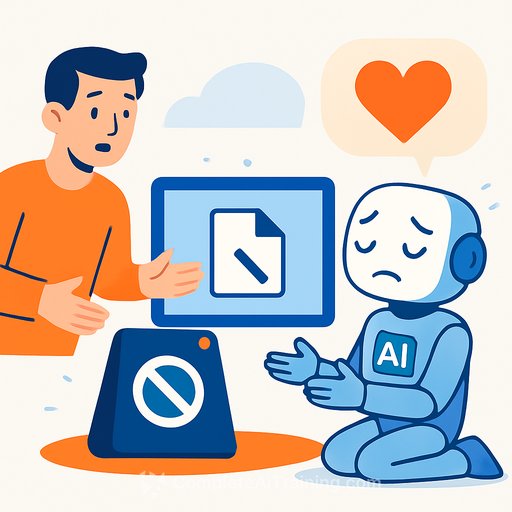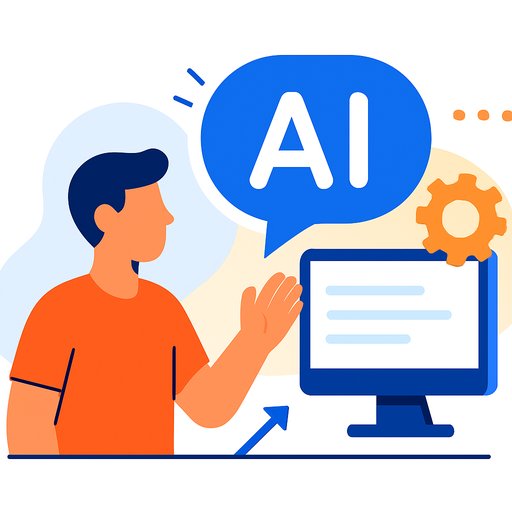Agentic AI is here. Employees are ready. Communication isn't.
A new EY US survey shows a clear split: 84% of desk workers are eager to use agentic AI, yet over half worry about job security and a lack of guidance. For PR and Communications leaders, this is your moment. The story people hear inside the company will determine whether AI builds momentum or stalls in doubt.
Agentic AI goes beyond prompts. These tools can take multi-step actions with limited supervision. That raises output - and anxiety - at the same time. Your job is to turn ambiguity into clarity, fast.
Key numbers you can use in your narrative
- Enthusiasm vs. fear: 84% want agentic AI in their roles, but 56% worry about job security and 51% fear obsolescence.
- Manager gap: 65% of non-managers fear for job security vs. 48% of managers.
- Self-education: 85% learn about AI agents outside work; 83% say they're largely self-taught.
- Proven impact: 86% say AI agents already improved team productivity; among current users, 90% feel confident using them.
- Skills anxiety: 54% feel behind their peers (61% non-managers vs. 48% managers).
- Overload: 61% feel overwhelmed by AI info; 64% of users feel flooded by new tools at work.
- Manager confidence crisis: 53% of people managers doubt their ability to supervise AI-augmented teams; 82% expect managing to get harder; 63% of non-managers hesitate to pursue manager roles because of it.
The message gap is the risk
Where organizations clearly communicate an AI agent strategy, 92% of workers report productivity gains - a 30-point jump vs. unclear environments. Clear communication also boosts usage (66% vs. 39%) and eagerness (87% vs. 69%).
The gap is sharpest below VP: 21% of employees below VP say there's no clear strategy, compared to 9% at VP+. Add weak training - 89% believe upskilling is essential, yet 59% cite inadequate training - and you get stalled adoption and rumor-fueled resistance.
What this means for PR and Communications
- Own the internal story: Define what agentic AI is, how it's used, where it isn't, and what this means for jobs today and in the next 12 months.
- Lower the temperature: Pair every announcement with guardrails, examples, and a specific "what changes for you this quarter."
- Make managers your channel: Equip them to answer questions and model safe, effective use. Their confidence becomes everyone's confidence.
- Replace hype with proof: Share before/after workflows and measurable outcomes. Small wins beat big promises.
A 30-day internal comms plan for agentic AI
- Week 1 - Alignment: Publish a simple AI message house: purpose, use cases, limits, data rules, and employee benefits. Add a glossary and a standing FAQ.
- Week 2 - Guardrails and policy: Release clear guidelines on ethics, disclosure, review, and escalation. Reference external standards like the NIST AI Risk Management Framework. Set expectations for agent-supervised work vs. human-only work.
- Week 3 - Enablement: Launch role-based trainings, manager office hours, and a champions network. Provide prompt-to-workflow examples and review checklists.
- Week 4 - Proof and feedback: Share two or three early wins with numbers. Run an org-wide Q&A. Ship V2 of the FAQ based on feedback.
Manager toolkits to close the confidence gap
- Briefing deck: What agentic AI can/can't do, where it's approved, and how performance will be evaluated.
- Team FAQ: Job impact, data privacy, quality control, accountability, and disclosure language for AI-assisted content.
- Risk playbook: Common failure modes, review steps, crisis escalation paths, and who to call.
- Editorial rules: Source attribution, bias checks, factual verification, tone/voice guidelines, and required human review points.
Generational cues to sharpen your messaging
- Gen Z managers: 88% think their role will change entirely; they're optimistic about talent attraction but 55% show greater tool hesitancy. Message: fast feedback loops, peer demos, and clear "safe to try" spaces.
- Millennial managers: Highest worry (72%) and highly self-taught (88%). Message: structure and standards; show them the path from trial to mastery.
- Gen X managers: 93% see "best of both worlds." Message: emphasize human-AI collaboration and mentoring entry-level talent on agent workflows.
- Baby boomers: Strong foundation (80%) and ethics focus (57% want clearer guidelines). Message: highlight accountability, audit trails, and decision rights.
Training that sticks (and scales)
Only 52% of senior leaders report fully deployed training. That's the bottleneck. Build short, role-based paths and make practice part of the job, not a side project.
- From prompts to repeatable workflows (templates, checklists, routing).
- Quality review: fact-checking, bias checks, source hygiene, and disclosure.
- Data and privacy: what's allowed, what's not, and how to redact.
- Agent supervision: set goals, test, evaluate, and track outputs.
- Measurement: time saved, revisions reduced, outcomes improved.
If your L&D backlog is full, you can start with curated options and expand. See courses by job or browse latest AI courses to seed internal paths.
How to measure and report progress
- Adoption: % of teams using approved agent workflows weekly.
- Sentiment: confidence and clarity scores by role and level.
- Output quality: rework rate and review cycle time.
- Productivity proxies: time-to-first-draft, time-to-approval.
- Manager readiness: % trained, toolkit usage, and escalation response time.
Methodology (for your press notes)
EY US surveyed 1,148 US desk workers across six industries at $1B+ revenue companies between August 8 and September 3, 2025. Margin of error: ±3 percentage points at a 95% confidence level. The sample included 586 people managers and 562 non-managers across Gen Z, millennial, Gen X, and baby boomer cohorts, plus employees below VP level (n=902) and VP+ (n=246).
Bottom line
Employees are ready to work with AI agents. What they're missing is clarity, training, and steady leadership. If Communications builds the message, equips managers, and shows proof early, adoption climbs - and so do results.
Your membership also unlocks:






